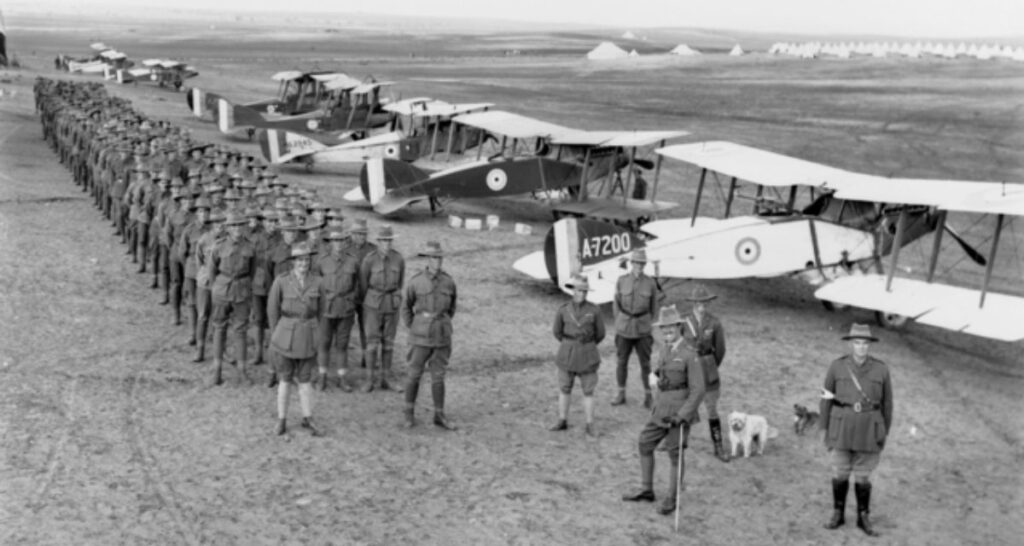This content discusses the evolution of military tactics throughout history. It starts with the introduction of trench warfare during World War I and the significant impact it had on the way wars were fought. The interwar period between the two World Wars saw the development of new tactics, such as mechanized warfare and the use of air power. World War II witnessed the implementation of combined arms warfare and Blitzkrieg tactics. The Cold War era introduced the concept of nuclear deterrence and the rise of asymmetric warfare. Finally, it explores modern warfare characterized by technology, information warfare, precision-guided munitions, unmanned aerial vehicles (drones), and cyber warfare. The conclusion emphasizes that military tactics will continue to evolve as new technologies and threats emerge.
From Trenches to Modern Warfare: Evolution of Military Tactics
Introduction
Military tactics have evolved significantly over the centuries, adapting to the changing nature of warfare. From ancient battles fought on open fields to the complex modern warfare scenarios, every era has seen its own unique set of challenges and strategies. This article traces the evolution of military tactics, from the trench warfare of World War I to the technological complexities of modern combat.
World War I: The Rise of Trench Warfare
The First World War witnessed a significant shift in military strategy with the introduction of trench warfare. This tactic involved digging long, fortified trenches to provide cover and protection against enemy fire. The trenches were interconnected, forming a complex network that stretched for miles across the battlefields. Soldiers lived in these trenches for months, enduring unimaginable hardships.
Trench warfare completely transformed the way wars were fought. It created a static front, with both sides locked in a stalemate. The battles became attritional, with armies attempting to break through enemy lines to gain a tactical advantage. New weapons such as machine guns, artillery, and poison gas were used extensively, resulting in devastating casualties.
Interwar Period: Lessons and Innovations
The interwar period between World War I and II witnessed a period of reflection and innovation. Military leaders analyzed the shortcomings of trench warfare and sought to develop new tactics to overcome its limitations.
One of the significant developments during this period was the introduction of mechanized warfare. Tanks emerged as a powerful tool to break through enemy lines and restore mobility on the battlefield. The use of armored vehicles revolutionized warfare, as it allowed for rapid advances and maneuverability.
Air power also gained prominence during this time. The invention of the airplane and its subsequent use in warfare provided new opportunities for reconnaissance, aerial bombing, and support during ground operations. The combination of tanks and aircraft formed the basis for the emerging doctrine of combined arms warfare.
World War II: Combined Arms and Blitzkrieg Tactics
The lessons learned from the interwar period paved the way for the rapid advancements in military tactics during World War II. The Germans, in particular, developed new strategies that revolutionized warfare.
Blitzkrieg tactics, meaning “lightning war,” were characterized by fast-moving armored units supported by air superiority. The goal was to achieve quick and decisive victories by breaking through enemy defenses with overwhelming force. This strategy relied on the effective use of tanks, aircraft, and infantry working in coordination.
Combined arms warfare became the norm during World War II. Different branches of the military collaborated closely, with infantry, tanks, artillery, and air support working together in a synchronized manner. The effective integration of these forces allowed for greater flexibility, mobility, and tactical coordination on the battlefield.
Cold War Era: Nuclear Deterrence and Asymmetric Warfare
The advent of nuclear weapons during the Cold War shaped military tactics in the second half of the 20th century. The fear of mutually assured destruction led to the concept of deterrence, where both superpowers maintained large arsenals to deter any potential attack.
A significant development during this period was the rise of asymmetric warfare. In this type of warfare, weaker parties seek to exploit the vulnerabilities of their technologically superior opponents. Guerrilla tactics, insurgency warfare, and the use of unconventional forces became the preferred methods for non-state actors to challenge more powerful adversaries.
Modern Warfare: Technology and Information Warfare
The 21st century has witnessed a paradigm shift in military tactics due to the rapid advancements in technology. Modern warfare is characterized by the integration of information warfare, precision-guided munitions, unmanned aerial vehicles (drones), and cyber warfare.
Information warfare involves the use of electronic systems to disrupt or gain control over the enemy’s information networks and capabilities. Precision-guided munitions enable pinpoint accuracy in striking targets, reducing collateral damage and civilian casualties.
Unmanned aerial vehicles, commonly known as drones, have transformed warfare by providing real-time surveillance, reconnaissance, and targeted strikes against enemy positions. They have minimized risks to military personnel and expanded the range of military operations.
Cyber warfare is another emerging domain in modern military tactics. It involves the use of computer networks to launch attacks on enemy infrastructure, disrupt communication systems, and gather valuable intelligence.
Conclusion
The evolution of military tactics reflects the ever-changing nature of warfare. From the trenches of World War I to the combined arms warfare of World War II and the technological complexities of modern warfare, military strategists continuously adapt their tactics to gain an advantage on the battlefield. As new technologies and threats emerge, the evolution of military tactics will be an ongoing process.
